- Home
- Andy McNab
Spoken from the Front Page 2
Spoken from the Front Read online
Page 2
The terrain and the climate had proved too much for many over the years. In 1842, General Elphinstone's 16,000 troops had been largely wiped out during the retreat from Kabul. More than a century on, after the Russian invasion of Afghanistan, the Red Army had failed to hold Helmand with an entire division of 25,000 troops – the sort of figure that British commanders could only dream of having in the region.
By June 2006, the task force had deployed troops to a number of Helmand's towns: Musa Qa'leh, Now Zad, Sangin, Kajaki and Gereshk. The provincial reconstruction team was located in Lashkar Gah, Helmand's capital. Often these remote positions were sited in old police stations in the town centre. The task force's engineers were kept busy making them defensible and providing basic sanitation. Before long the platoon houses were attracting Taliban activity and by midsummer many were under constant attack. The forces that occupied them were too small to dominate the surrounding ground so they were forced to sit tight and weather the storm of rocket-propelled grenades (RPGs), small arms and Chinese 107 rockets. Maintaining the logistics supply line with the platoon houses was particularly difficult, with the terrain making resupply by road often impossible, and the limited landing sites making helicopter resupply fraught with danger. As the fighting intensified, troops ran precariously low on ammunition, and extracting casualties often meant Chinook helicopters having to risk landing in the midst of ongoing fire-fights.
By the end of August, the brigade had suffered twelve fatalities through enemy action. Perhaps even more concerning was that the towns to which it had intended to bring security and reassurance had become devastated war zones. Many local people had moved out. Day by day, the situation in Helmand became more difficult but the British were determined to pursue their objective despite the odds being stacked against them. One thing was certain: the challenges facing servicemen and women going to Afghanistan were formidable. But from early on all the signs were that they were determined to meet them.
1
Introduction: Operation Herrick 4
In April 2006, the troops of 16 Air Assault Brigade started to arrive in Helmand province as part of Operation Herrick 4. The entire force totalled around 3,300 troops. This was a journey into the unknown for British soldiers because they were taking over from US forces. However, it soon became clear that the hope of John Reid, the defence secretary, that we would be able to leave within three years without a shot being fired was unrealistic.
The main combat power was provided by 3 Battalion The Parachute Regiment supported by 1 Battalion The Royal Irish, the Apache attack helicopters of 9 Regiment Army Air Corp, Chinooks from 27 Squadron RAF, 7 Parachute Regiment Royal Horse Artillery, a battery of Desert Hawk unmanned aerial vehicles from 32 Regiment Royal Artillery and Royal Engineers from 51 Parachute Squadron. Other support roles were assumed by 13 Air Assault Regiment RLC (Royal Logistic Corps), 7 Air Assault Battalion REME (Royal Electrical and Mechanical Engineers) and 16 Air Assault Medical Regiment. Harriers from the Joint Force Harrier detachment, which had been operating from Kandahar since September 2004, provided troops with vital close air support; 34 Squadron of the RAF Regiment offered Force Protection.
April 2006
Colour Sergeant Richie Whitehead, Royal Marines
Colour Sergeant Richie Whitehead, of 42 Commando The Royal Marines, is thirty-five. The son of a civil engineer, he was born in Ipswich, Suffolk, and has a brother. His family moved to Chatham, Kent, when he was eleven. Whitehead joined the Army Cadets aged twelve and the Royal Marines at seventeen, a year after leaving school. He has been on operational tours to Northern Ireland, Bosnia, Iraq, and Afghanistan twice, the first in 2002, in the wake of the 9/11 attacks on the US, and the second to Helmand province in 2006. Whitehead left the Royal Marines in September 2008 with a medical discharge to work as a regional director for a specialist asbestos company. He lives near Dartmoor, Devon.
We arrived in Lashkar Gah at the end of March. But it wasn't my first tour to Afghanistan. I had been one of the few to be there in 2002 when the Marines were sent there as part of Op Jacana. On that occasion, we ended up staying for five months. It was seen as the big search [for Osama bin Laden], the show of force, and to support the Americans in the hunt for terrorists. It was all very new for us as a brigade. It was a steep learning curve, which we took in our stride. There wasn't anything really in and around Bagram [air base] but there were a lot of operations going out into numerous cave complexes and to the far south to places like Khowst. Back then no one went that far south. It was eventful in that we met a lot of people.
There were local villages around us. There were always incidents. There were two villages near our little perimeter track that we made through the minefields around the outside of Bagram: in one village our track went through it and so, obviously, the Americans gave them a briefcase of money and said, 'Thank you very much for letting us use your field.' So, those villagers were happy with us. But the other village, which was approximately 500 metres away, hated them because they [the first village] got the money but they themselves didn't. So they used to mortar each other every night and set traps for each other's kids and stuff like that. We had to take charge of that and try to sort it out. But the locals in Kabul, where the Taliban had fallen the year before, during Op Anaconda, were generally very pleased to see us. It was very quick how you saw a Western approach to everything: the women started wearing jeans under their burkas and things like that.
So it was strange being back in Afghanistan four years later. Before we got out there, the advance party was caught in a suicide bombing. The first multiple out there had to deal with it. They got hit by a suicide bombing at the front gate at Lashkar Gah camp, which shocked them massively. There were a couple of injuries, nothing serious, just walking wounded. Of course, the suicide bomber died. And the vehicle was written off. So we were sat around on our bergens [rucksacks] delayed, waiting to get out there and obviously we heard about it.
It was a weird time because we had a lot of young lads in the Army, and a lot in my multiple. They had never been operational. They gave them to me because apparently with my experience I could take care of them. So the anxiety was quite noticeable, to say the least. Before we got there, everyone was like, 'What are we going into?' Very anxious.
As soon as we got out there, we took over from the Americans. The Americans had a very forceful, aggressive way of handling the local fraternity. They would suit up, heavily armoured in their SUVs, and drive around Lashkar Gah as fast as possible to get from A to B and back again. Our battery commander had his head screwed on. He had discussions with all the multiple commanders and we wanted to go out there with our arms open. But from day one it was 'Suck it and see.' We thought: Are we going to wear berets or are we going to go too soft? Are we going to always have our weapons like this [he raises his arms] or are they going to be down by our sides? These debates were going on from the start, while we were out on patrol. No one knew what our approach should be because we did not have any information to tell us how to do this or that. So it was another steep learning curve. But we got to grips with it well. The population loved us.
This time round [Operation Herrick 4 and into Operation Herrick 5] I was a multiple commander. When we originally turned up in Lashkar Gah, there were only 250 people [today there are more than 1,500]. There was a nice fountain in the middle and a volleyball court, all designed and made by the Americans. There was a perimeter fence and inside there were little pieces of hardened accommodation that the Americans had built. I was lucky enough to have one of these. It was a six-man room with three bunk beds but you had your portable TV and your Xbox.
1 May 2006
McNab: This was a significant day. The Union flag replaced the Stars and Stripes at Lashkar Gah as America formally handed over the 'watch' of Helmand province to Britain. The first members of 16 Air Assault Brigade had been arriving there throughout April. The military task was to keep the peace and to support development projects organized by the For
eign and Commonwealth Office and the Department for International Development. The aim was to bring Helmand into the ambit of the central Afghan government. British efforts were to centre on bolstering the authority of the governor and reforming the province's parlous police, judiciary and penal system. But it was privately acknowledged that the Taliban had been steeled by America pulling its forces from Helmand, which produces most of Afghanistan's £1.6 billion-worth of drugs.
May 2006
Captain Nick Barton, DFC, Army Air Corps
Captain Nick Barton, DFC, is an Apache helicopter pilot with the Army Air Corps. Aged thirty-two, he grew up in West Sussex and, after leaving school, took a gap year in New Zealand teaching sport, and travelled the world. He graduated with a master's degree in mechanical engineering with French. In 2001, he went to Sandhurst for officer training, sponsored by the Royal Engineers. After he had passed flying aptitude courses, he joined the Army Air Corps. Following his eighteen-month helicopter pilots' course, which started in January 2002, he joined 656 Squadron as an Apache pilot. He has completed four tours in Afghanistan, serving with 656, 662 and 664 Squadrons, and has since been posted to instruct at Sandhurst.
The Apache is a clever aircraft. It has amazing technology. It's robust, very durable and very capable. And it has awesome fire-power. It can fly at 140 knots max. We – there is a crew of two – can cruise at 120 knots. In Afghanistan, we have an extra fuel tank. We carry twenty-four rockets, and a standard load is two Hellfire missiles, although we can adjust the weapons' load according to the mission. We sit one pilot in front of the other. You can fly from each seat. The more experienced person is usually the mission commander. Ideally, he should be in the front seat, since it's the only one from which you can operate the laser and control the sights. For weapons' guidance, range, etc., that is a front-seat job. Ultimately the Apache is an attack helicopter. The optics are amazing – on a very clear day, at midday, you will be able to break out a guy at about twelve Ks [kilometres], depending on haze. A new sighting system is becoming operational at the moment, which will greatly improve the night-time capability.
Ideally, you want to get target rounds on your first burst from your 30mm, probably your initial weapon for a point target. There is always going to be some slight error in the gun of, say, ten to fifteen metres when you're firing from two K in a moving aircraft. Flying straight at the target is more accurate. You then want to be able to adjust straight away so you're looking for perfect second rounds hit.
Most of the time you fly as a pair [of Apaches] so you have four pairs of eyes looking out – and you have mutual support if you develop a fault or problem. The patrol commander will be mission lead and he will do the majority of the radio work, and your wing aircraft will be the lower aircraft. The higher aircraft is going to get a better line-of-sight comms, leaving the wing to focus more on the targeting. However, some patrol commanders do it differently. Our main role is attack: providing close-fire support for the ground troops. Our other role is providing escort protection to other aircraft, which are going in to the tastier [more dangerous] landing sites.
I first went out to Afghanistan on 1 May 2006. We flew into Kabul, over-nighted there, then went down to Kandahar. Initially we operated out of Kandahar for the first month and a bit – we used to deploy for the day and operate out of [Camp] Bastion when it was a shell compared to what it is now. So we were operating off a gravel pad – quite sporty [challenging/dangerous] – and it was austere in comparison to the runways and air-traffic control that we have now.
Afghanistan was pretty desolate. You were never quite sure what you were going into. There's a certain amount of tension about anyone's first tour. I certainly had a few questions as to why we were there. But you can console yourself by thinking: My job is to be as good as I can be, to provide the best support to whichever call sign needs us.
18 May 2006
McNab: Our troops in Afghanistan received an early indication of the scale of the Taliban resistance. More than a hundred people died as Taliban fighters and Afghan forces clashed in the fiercest fighting since Britain had arrived in the province. A wave of attacks left some eighty-seven Taliban fighters and suicide bombers dead. The battles also left about fifteen Afghan police, a Canadian soldier, an American civilian and an Afghan civilian dead. Nine hours of fighting had begun after reports that Taliban fighters had massed in Musa Qa'leh a day earlier.
19 May 2006
Flight Lieutenant Christopher 'Has' Hasler, DFC, RAC
Flight Lieutenant Christopher 'Has' Hasler, DFC, is a Chinook helicopter pilot with the RAF. Aged twenty-nine, he is Canadian and was born in Jasper, a town in the Rockies. He was brought up in Nova Scotia and went to New Brunswick University to do a degree in international relations. However, he decided not to complete his course because he joined the RAF. Initially he questioned the value of his six-month training at RAF Cranwell in Lincolnshire, but he knuckled down and fulfilled his ambition to fly military helicopters. After a relatively quiet tour of Iraq, he served in the Falkland Islands, Northern Ireland and Europe. He arrived in Afghanistan, as a flying officer, in May 2006 for a two-month tour. He has since been promoted to flight lieutenant and has done a further five tours to Afghanistan. Hasler, who is single, is based at RAF Odiham in Hampshire.
The Chinook is essentially a troop-carrying helicopter, used to drop off and collect troops [including injured soldiers]. It is about 100 feet long, 20 feet tall, and it can fly at up to 160 knots. It is armed with two mini guns and an M60D machinegun. It is flown by two pilots who sit side by side. We also have two crewmen, who do everything the pilots don't do: loading and unloading and also firing the guns if needed. The crewmen work the aircraft – we just fly it. If we're dropping off light-ordered troops, just with their weapons and ammunition, then we could carry thirty to forty max in Afghanistan. But it also depends on the conditions – how hot it is, how high we are. Thirty to thirty-five troops would be a good, safe number. Flying helicopters for me is a schoolboy dream that I've never grown out of.
20 May
Departed the Sqn at 2100L [local time] to pick up a few crewmen, and headed to Brize [Norton] to catch our Tristar. For once, the movers at Brize didn't fuck us around too much and we were on the plane in quite good time.
I was pleasantly surprised when a girl from my Initial Officer Training course [at RAF Cranwell] sat beside me. Besides being a Harrier pilot, extremely pleasant and quite clever, she is also very attractive. This had the benefit of making the trip to Kabul seem much shorter.
As we approached Kabul, we were instructed to don our Kevlar helmets and CBA [body armour]. This is a very peculiar sight; being in a white airliner wearing combat gear ... funny maybe only to me.
Upon arriving at 1500L, we were received by the movers and told that our onward flight to Kandahar wouldn't be leaving until 0500L the following morning. It almost felt good being fucked around again by the movers, like some sort of global balance was restored.
Finally, we arrived at KAF [Kandahar airfield] at 2300L on the 19th. KAF runs on Zulu time [a military time zone the same as Greenwich Mean Time], though, so it was actually 0300Z. It would have been great to get our heads down at that point, as we were all exhausted, but instead we were thrust immediately into theatre briefs ... very long briefs.
We awoke today with the sun and were subjected to more briefs and familiarized ourselves with the running of the ops. The latter took the majority of the day.
Upon initial assessment, it is quite clear to me that 'Afghan' is going to be much busier than Iraq. Just today a large US, French and ANA (Afghan National Army) convoy left Camp Kajaki down in the north of Helmand and headed for Camp Robinson in the south. They were ambushed by approx 15 TB (Taliban) and suffered heavy casualties (35–40 dead), including 2–3 French and 2 US. The Chinook IRT [incident-response team] was ordered to pick up the casualties and provide top cover (aided by Harrier and Apache). Later, the 3 Chinooks were tasked with landing the Paras in a
nd around the TIC [troops in contact] in order to provide a defensive line.
Yesterday a Canadian FAC [forward air controller] was killed by an RPG whilst directing A-10s [planes] and Apaches onto an enemy position. She was the first female cas [casualty, fatality] suffered since the Second World War. This place is definitely dangerous and we are right in the middle of it.
May 2006
Major Maria Holliday, QGM, Royal Military Police (RMP)
Major Maria Holliday, QGM, of the Royal Military Police (RMP) is forty-nine. She was born and brought up in Chorley, Lancashire. An only child, her father was an armaments inspector. She attended Holy Cross High School in Chorley before joining the Army in 1978. Her father had served in the Army during the Second World War and Holliday was just four when she announced she intended to follow in his footsteps. She joined as a private in the Women's Royal Army Corps (WRAC), but later transferred to the RMP. Holliday served in Northern Ireland for more than seven years, during which she was awarded the Queen's Gallantry Medal (QGM). She was commissioned as a late-entry officer in 1999. She served in Iraq in 2005 and Afghanistan in 2006. Holliday is based at the Army's Bulford camp in Wiltshire.

 Get Me Out of Here!
Get Me Out of Here!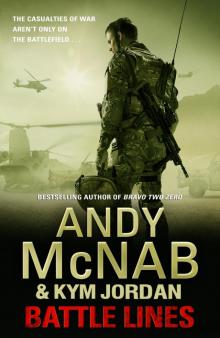 Battle Lines
Battle Lines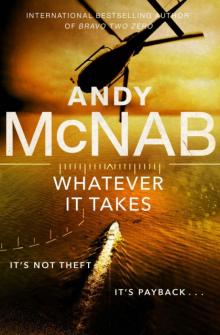 Whatever It Takes
Whatever It Takes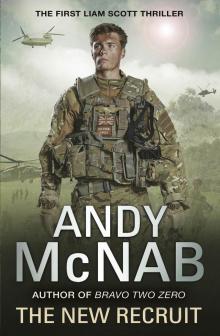 The New Recruit
The New Recruit War Torn
War Torn Brute Force
Brute Force Crossfire
Crossfire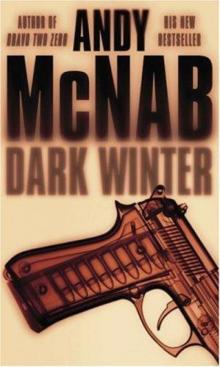 Dark Winter ns-6
Dark Winter ns-6 The Grey Man
The Grey Man Spoken from the Front
Spoken from the Front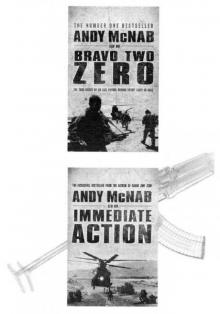 Meltdown
Meltdown Recoil
Recoil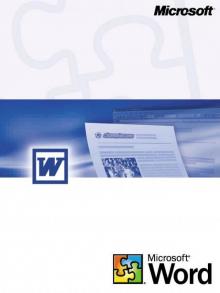 Nick Stone 1 - Remote Control.
Nick Stone 1 - Remote Control.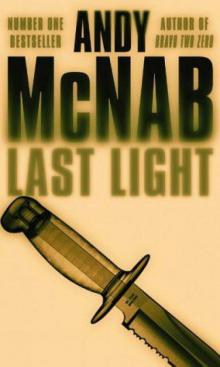 Last Light ns-4
Last Light ns-4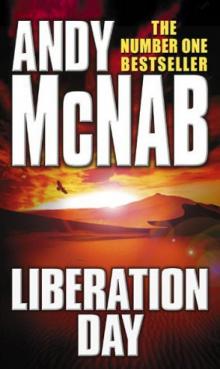 Liberation day
Liberation day Deep Black
Deep Black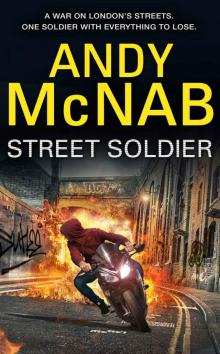 Street Soldier
Street Soldier Dead Centre ns-14
Dead Centre ns-14 Exit wound ns-12
Exit wound ns-12 Silent Weapon
Silent Weapon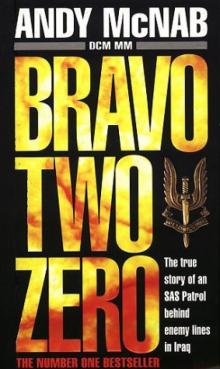 Bravo two zero
Bravo two zero Crisis Four ns-2
Crisis Four ns-2 Red Notice
Red Notice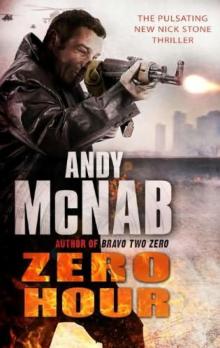 NS13 Zero Hour
NS13 Zero Hour Firewall
Firewall Last Light
Last Light Aggressor
Aggressor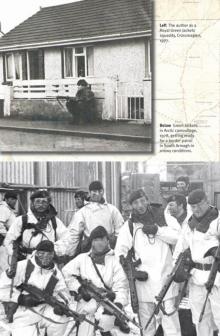 Seven Troop
Seven Troop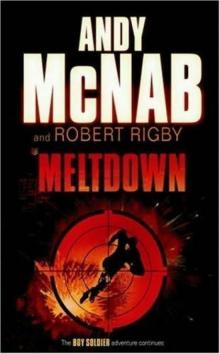 Meltdown bs-4
Meltdown bs-4 The Grey Man (quick reads)
The Grey Man (quick reads)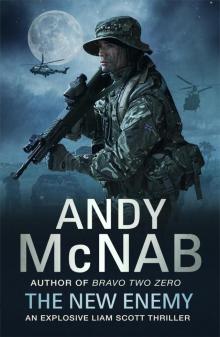 The New Enemy
The New Enemy Avenger
Avenger FireWall ns-3
FireWall ns-3 Silencer
Silencer Last Night-Another Soldier…
Last Night-Another Soldier… Line of Fire:
Line of Fire: Detonator
Detonator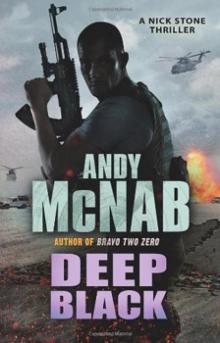 Deep Black ns-7
Deep Black ns-7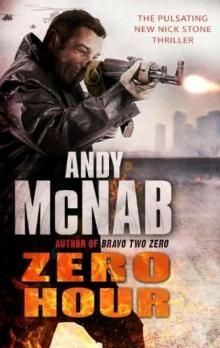 Zero Hour (2010) ns-13
Zero Hour (2010) ns-13 Brute Force ns-11
Brute Force ns-11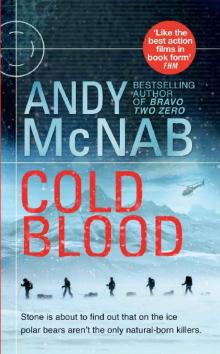 Cold Blood
Cold Blood Terminal Velocity
Terminal Velocity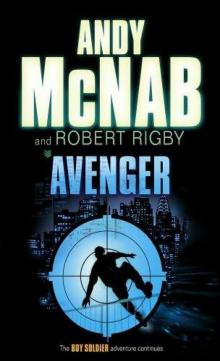 Avenger bs-3
Avenger bs-3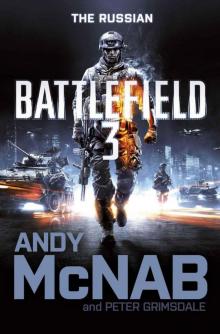 Battlefield 3: The Russian
Battlefield 3: The Russian DropZone
DropZone Zero Hour
Zero Hour NS13 Zero Hour (2010)
NS13 Zero Hour (2010)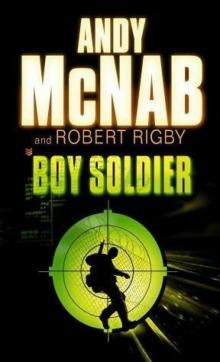 Boy soldier bs-1
Boy soldier bs-1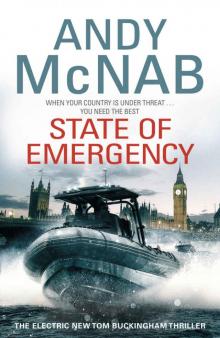 State Of Emergency: (Tom Buckingham Thriller 3)
State Of Emergency: (Tom Buckingham Thriller 3)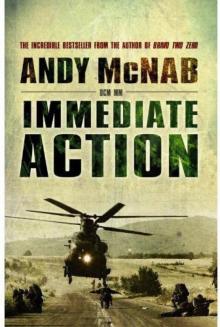 Immediate Action
Immediate Action The New Patrol
The New Patrol Crisis Four
Crisis Four Boy Soldier
Boy Soldier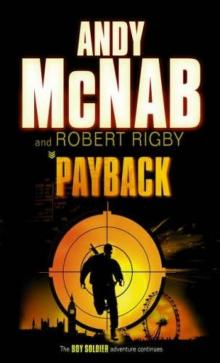 Payback bs-2
Payback bs-2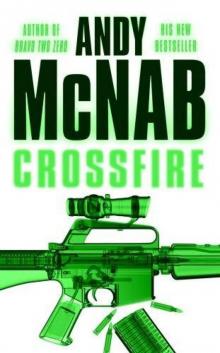 Crossfire ns-10
Crossfire ns-10 Today Everything Changes: Quick Read
Today Everything Changes: Quick Read Dead Centre
Dead Centre For Valour
For Valour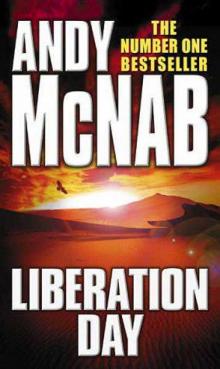 Liberation Day ns-5
Liberation Day ns-5 Aggressor ns-8
Aggressor ns-8 Remote Control ns-1
Remote Control ns-1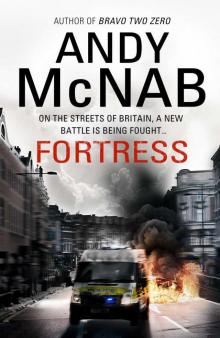 Fortress
Fortress On the Rock
On the Rock Dark Winter
Dark Winter